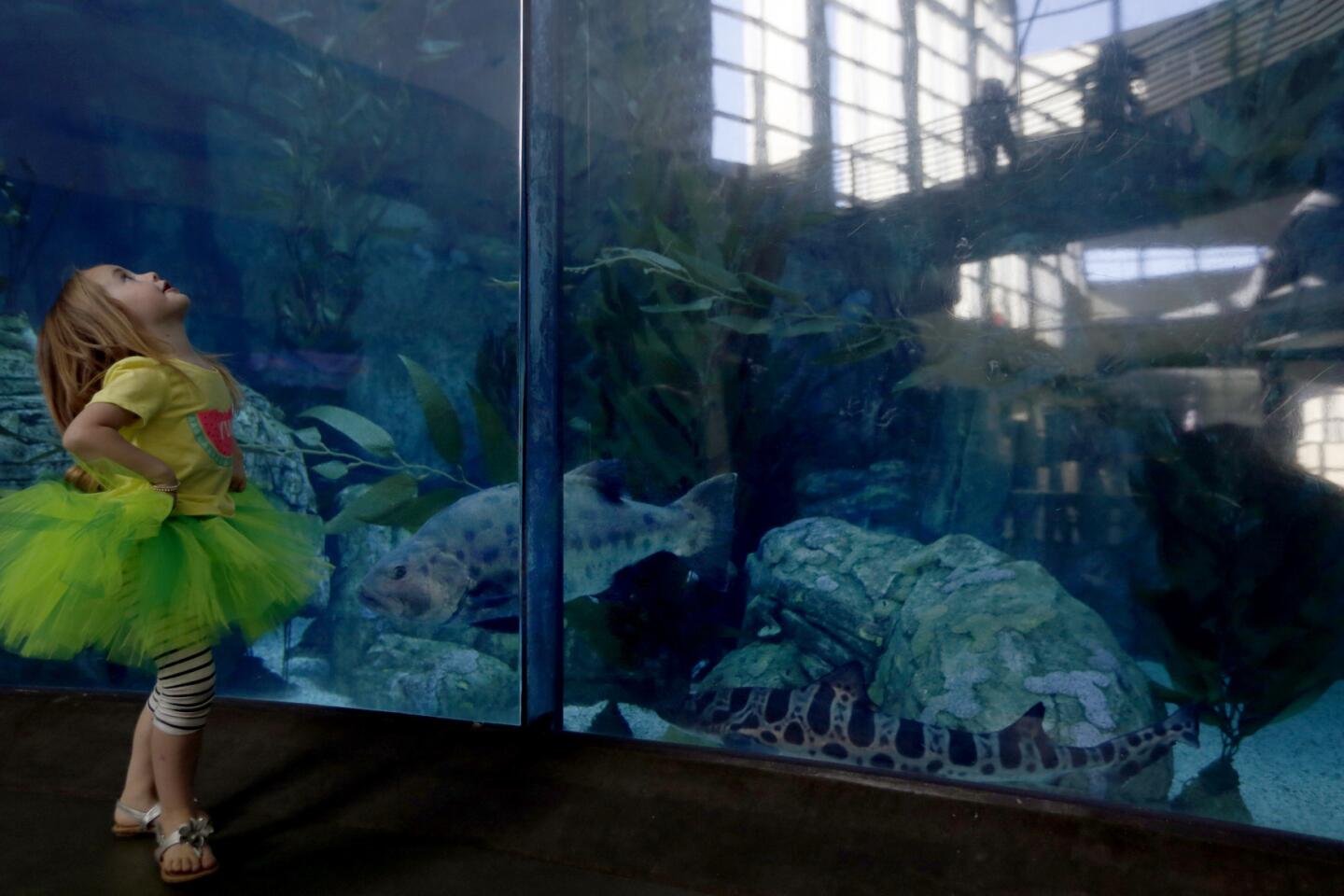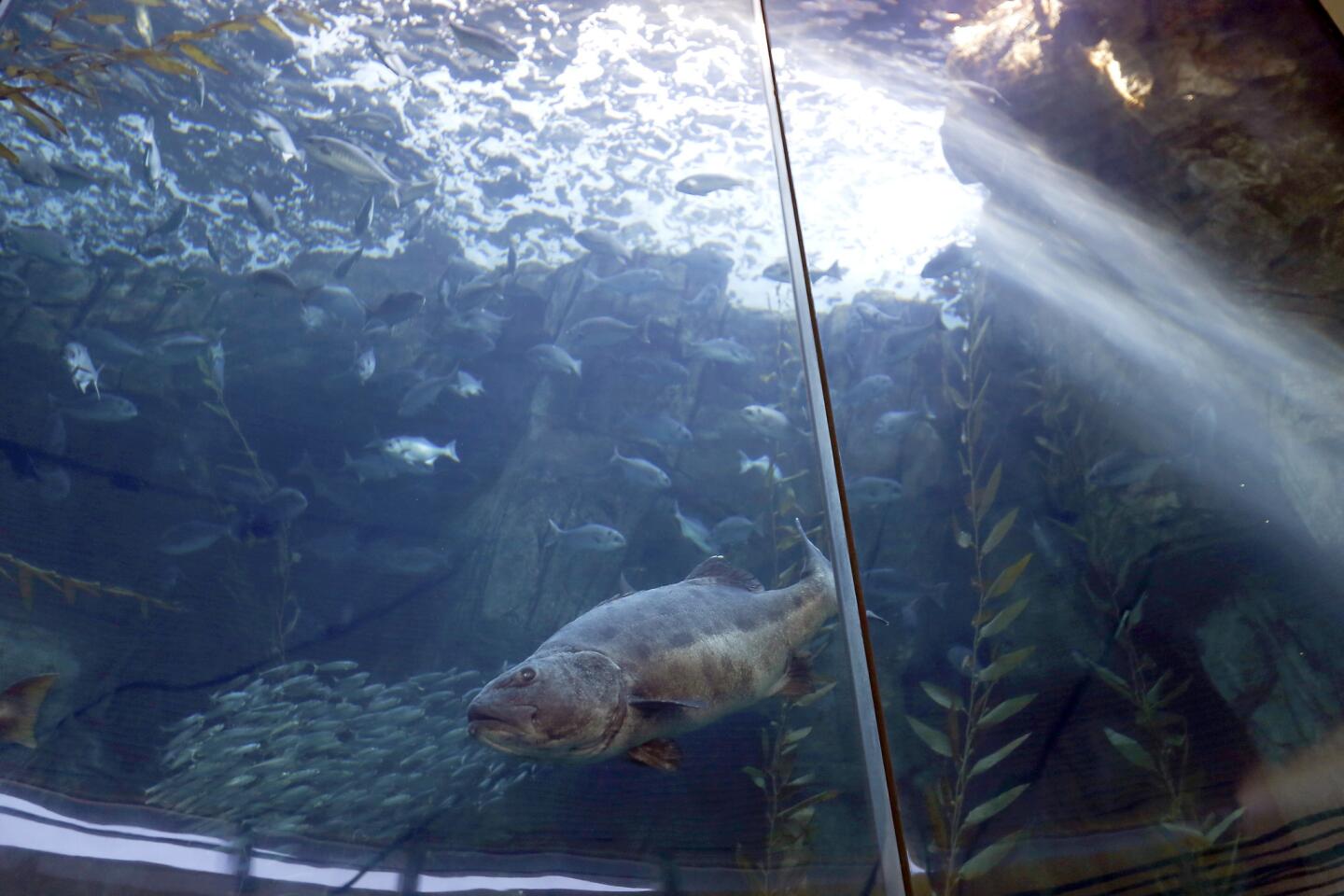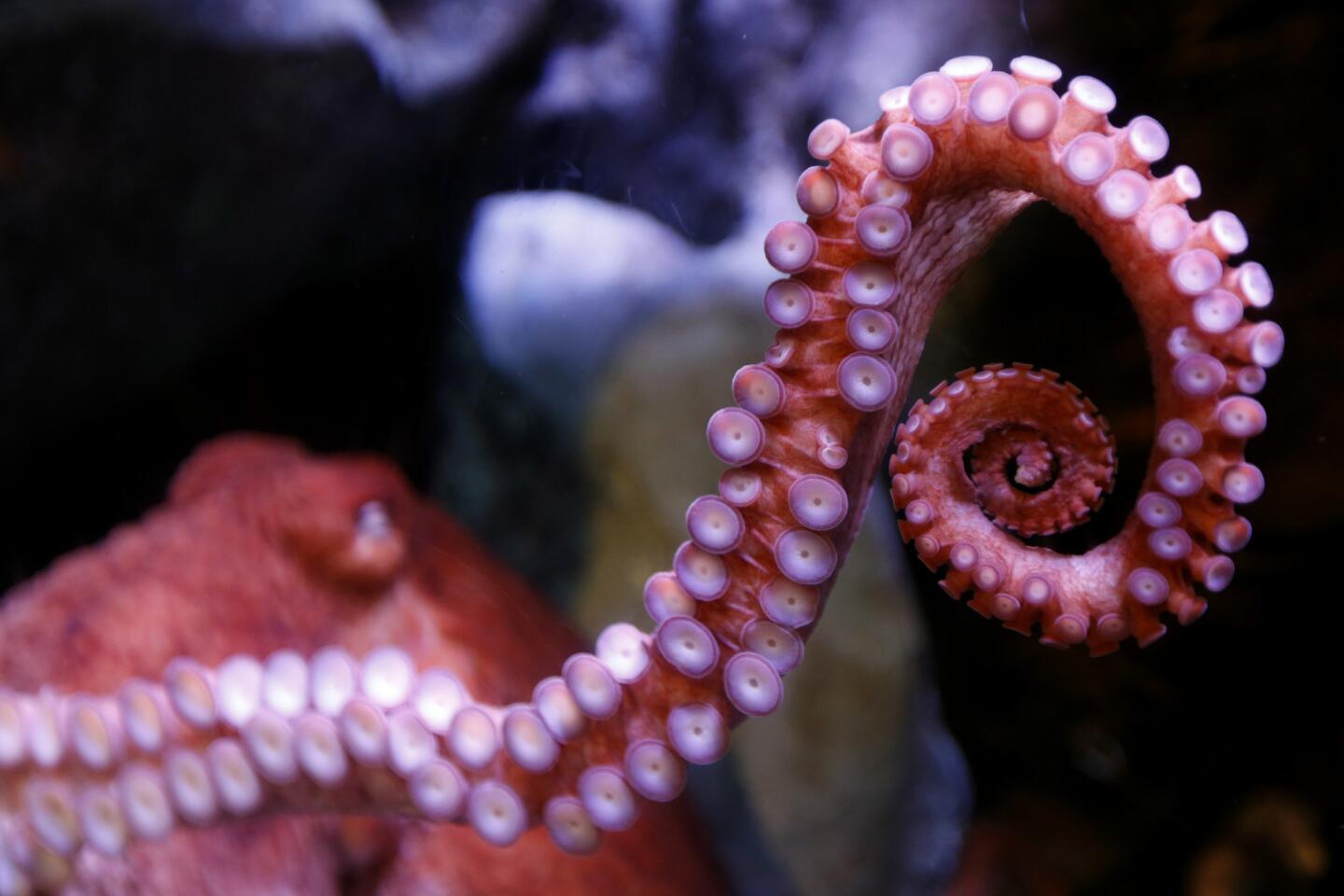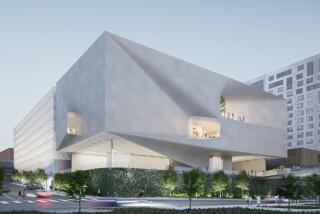Long Beach aquarium plans new wing and ‘immersive theater’ by 2018
The Aquarium of the Pacific in Long Beach is embarking on a $53-million expansion by adding a wing with architectural lines evoking the shape of a blue whale and featuring an “immersive theater” with a high-definition projection system and 130-foot-long, 180-degree curved screen designed to simulate ocean and coastal environments.
The 300-seat theater is nearly twice the size of the one it is replacing, and each seat will be wired to bring film productions of seascapes to life with films and simulated vibrations, fog, wind gusts and scents.
The theater will also screen live feeds from floating laboratories around the world.
The new Pacific Visions wing scheduled to open in 2018 will also include an art gallery of rotating offerings from across the nation, add 6,000 square feet of floor space for animal exhibits and provide more room for cultural events, lectures and even live performances by the Long Beach Symphony.
“Animals aren’t very good at telling their own stories about what’s happening to their vast but fragile wilderness,” said Jerry Schubel, the aquarium’s president and chief executive officer. “But new technologies will help us provide visitors with a deeper emotional understanding of how their own lives and those of the species on exhibit here are intertwined.”
Chris Lowe, a professor of marine biology at Cal State Long Beach, said the changes will enable the museum to “promote the cause of oceanic conservation in ways that also show people how they can get involved and make a difference.”
The plan, which will not require alteration of the existing aquarium, is an attempt to boost attendance in a target market dominated by powerhouse tourist attractions including Disneyland, Knott’s Berry Farm, Universal Studios and SeaWorld.
Designed by the San Francisco architectural firm EHDD, the new wing’s undulating facade will contain 800 iridescent glass panels that will change hues as the sun and clouds move during the day.
The aquarium opened with much fanfare at the edge of a palm-lined bay in 1998 as a crucial component of Long Beach’s effort to transform its gritty past as a naval shipyard into a regional tourism attraction.
It was conceived as a cornerstone of a waterfront retail and amusement complex that would bring visitors to Long Beach at a time when it was struggling to cope with the closure of a Navy shipyard and the loss of about 50,000 jobs.
Within years, the aquarium was struggling against dwindling attendance, strained relations with city officials and complaints of crowded rooms, lousy food and boring exhibits.
The problems left the aquarium unable to meet its $117-million bond obligation, which was to be paid from attendance revenue. The city refinanced the debt in 2001 to lower the payments.
The aquarium recruited new managers, who set to work responding to negative reviews. Concession menus were improved and a time-ticketing system was installed to accommodate no more than 2,500 visitors at a time.
The aquarium also made news by opening its “Shark Lagoon” exhibit and by receiving an award from the Assn. of Zoos and Aquariums, a nonprofit organization that accredits facilities that have met rigorous standards, for being the first facility in the world to successfully breed bizarre creatures known as weedy sea dragons.
As part of an effort to diversify what began as a largely white customer base, the aquarium launched a series of annual “cultural festivals” featuring the foods, dances and celebrations of various ethnic groups rooted in surrounding communities. The aquarium also hosts a “Festival of Human Abilities,” featuring a hip-hop wheelchair dance performance.
Based on annual attendance figures, the Long Beach aquarium, home to 11,000 animals, today ranks among the four most popular aquariums in the nation.
More than 25 million people have visited the facility since it was built during a boom in aquarium construction in the 1990s.
“We’ve made a lot of progress,” Schubel said. “Last year was our very best by every measure.”
Long Beach Mayor Robert Garcia hopes to see the aquarium continue that trend.
“This aquarium expansion is a huge deal for the study and appreciation of marine life, as well as for the city as an attraction that will draw more tourists to nearby hotels, restaurants and retailers,” Garcia said.
The Pacific Visions wing is supported by a fund-raising campaign that so far has more than $35 million in cash and pledged donations, and aquarium revenue. That amount includes a $15-million matching grant from the city of Long Beach, which owns some of the aquarium’s buildings and all of its property, and a $5-million matching grant from the city’s philanthropic Molina Family.
The aquarium anticipates raising the rest of the money from donations. Members of the public can support the project by making an online donation as well as on site by visiting the aquarium.
The city still owes $89,957,000 on the original debt, due by 2030, city officials said.
Louis.Sahagun@latimes.com | @LouisSahagun
ALSO
Live updates: Terrorist attack in Brussels
L.A. City Council approves two controversial high-rises in Hollywood
Angry man spends $200 at sushi restaurant, then leaves 13-foot python instead of a tip
More to Read
Start your day right
Sign up for Essential California for news, features and recommendations from the L.A. Times and beyond in your inbox six days a week.
You may occasionally receive promotional content from the Los Angeles Times.












